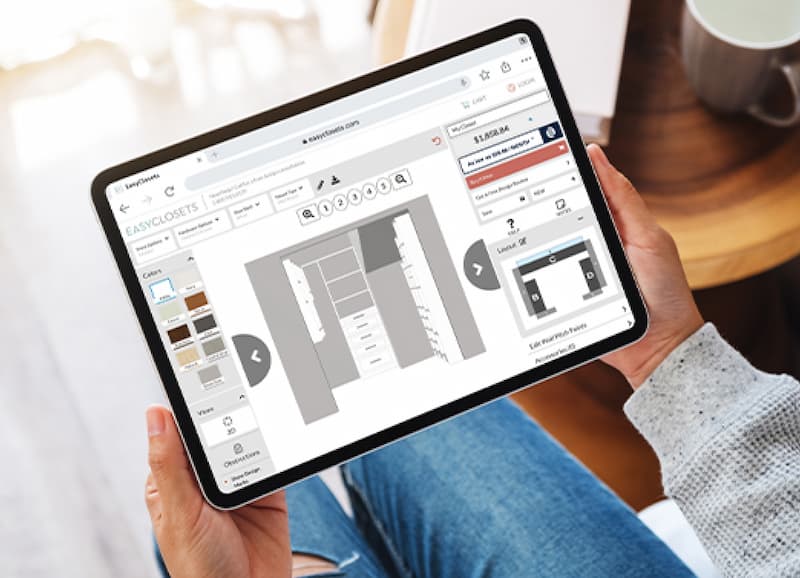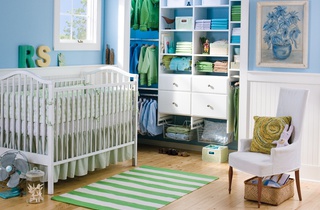Design Your Dream Space
Use our free, easy-to-use design tool to complete your design in minutes.
There is no greater joy than the birth of your first child and if you are like most expectant parents, a baby closet makeover is likely on your very long to do list. Thanks to a baby shower or two, hand-me-downs from older siblings, and countless trips to Babies R Us, most new parents are overwhelmed with the sheer volume of baby supplies needing a home. From home offices to guest rooms, what will soon become the nursery often holds a random collection of miscellaneous items that don't have a home or simply need to be removed.
This baby closet makeover started with a closet previously organized by a few rows of wire shelving that proved to be a poor use of space for the baby items the owners were planning to store. Five feet of long hanging space wasn't exactly the most efficient way to store baby clothes that were less than two feet long! Once the wire shelving was removed, the holes were patched, and the interior of the closet was re-painted, it was time for the fun part: designing and installing the new nursery closet! Using design software from EasyClosets.com the owners could easily design a closet to meet their unique needs and was customized to fit that exact space.
If a baby closet makeover is on your to do list, here are five design tips to keep in mind:
1. Lower the bar.
Try a walk around the room on your knees (or better yet, enlist a child's help). From this perspective, you'll soon find out what's hard to reach. Make it easy for your kids to pick up after playtime or hang up a sweater by lowering hooks, bars and shelves. Double and triple up on hanging space while your kids are small, placing the lowest bar where kids can reach their favorite outfits. The rods and shelves are adjustable so your closet can easily grow with your child.
2. Keep it safe.
Children (and sleep-deprived adults) are prone to bumping into things and grabbing onto anything nearby for balance or support. Stabilize structures that toddlers may topple. Remove their temptation to reach higher than they should by keeping off-limit items child-locked or out of sight. Choose "ouch-free" organizers with rounded edges.
3. Label and teach.
Show your kids where things are supposed to go with picture and word labels. Books. Blocks. Pants. Pajamas. While you build good habits, you can help kids make meaningful connections between words, illustrations and actual objects.
4. Express without mess.
Give your child an outlet for personal expression and a sense of responsibility for the room by designating shelves, tack boards or other special areas for artistic display. As they get older, your child may use these spaces to display trophies, aced report cards, or other items of inspiration.
5. Gather and display.
Tired of your child emptying out the dumpster-sized toy chest? Try providing smaller boxes, bins and baskets in easy-to-access places. In these, you can round up smaller toys, parts and pieces. See-through containers and low-wire baskets allow kids to choose what they want without upending the whole lot.
Design Your Dream Space
Use our free, easy-to-use design tool to complete your design in minutes.




